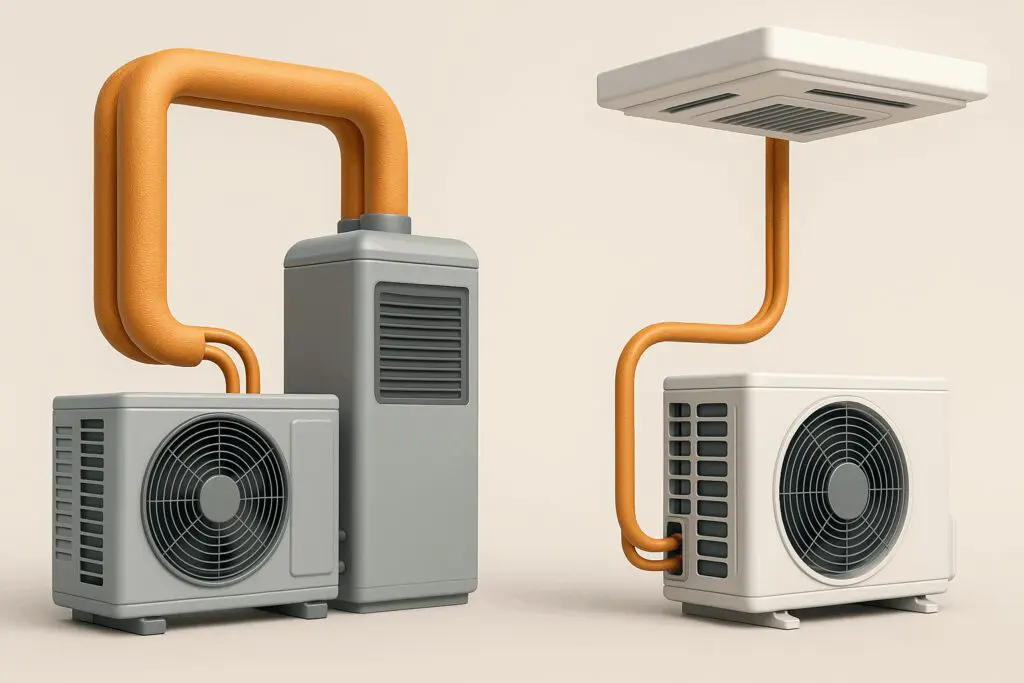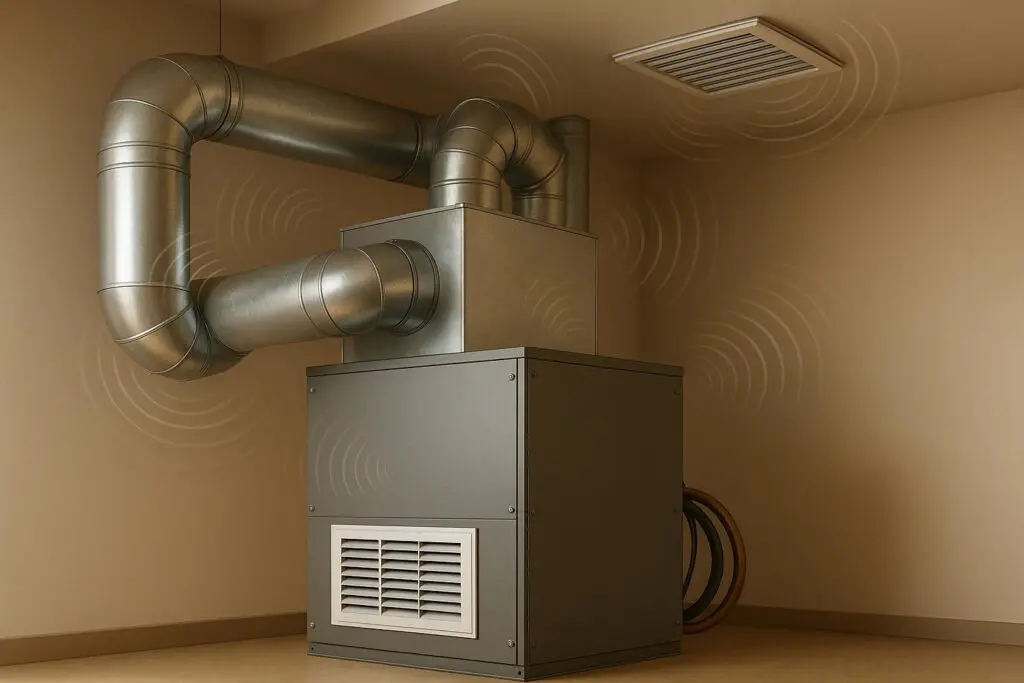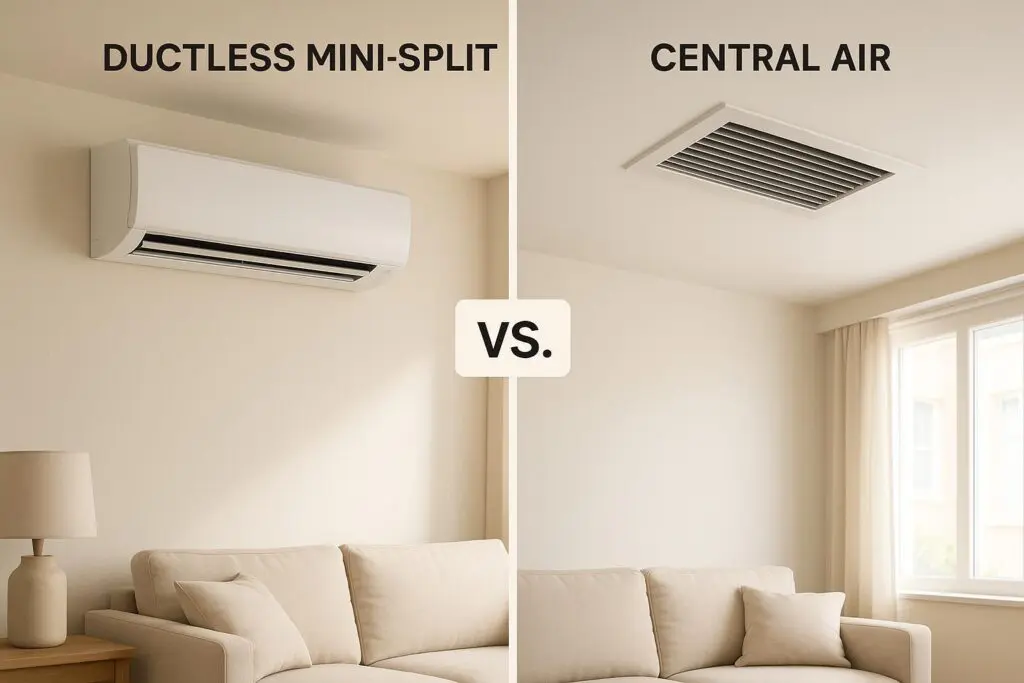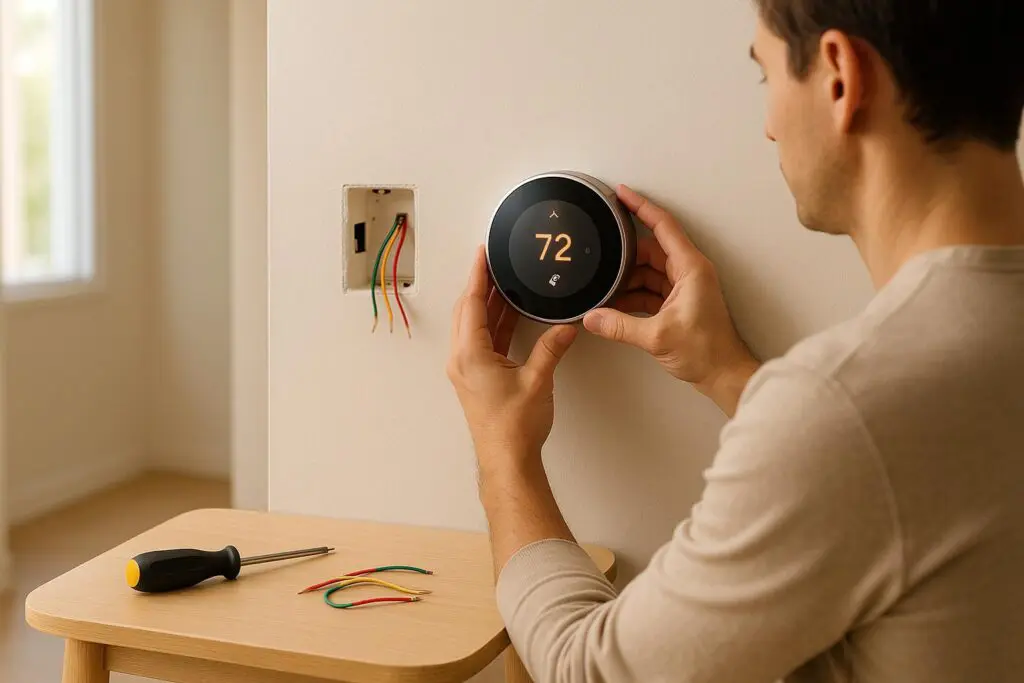Side-by-Side Comparison: SpacePak vs Mini-Split
Let’s run through the important dimensions and see where each system wins or loses — especially in the context of Chicago’s climate, building types, and homeowner priorities.
| Feature / Consideration | SpacePak (SDHV) | Mini-Split |
|---|---|---|
| Installation in older homes / retrofits | Advantage: the 2-inch flexible ducts can be threaded through existing walls, floors, ceilings, minimizing demolition. | Also strong advantage: mini-splits require only small refrigerant conduit holes; no ductwork means less invasive work. |
| Zoning / individual control | Zones are more limited; since air is distributed from a central handler, control is somewhat global. | Excellent: each indoor unit is independently controllable — you pay only to heat/cool rooms in use. |
| Efficiency / energy losses | Has some duct losses (despite small ducts) and inherent pressure/velocity losses. Also, high-velocity jets require energy. | Higher efficiency: no duct losses, plus inverter compressors. Many mini-splits can achieve very high SEER ratings. |
| Humidity control / comfort | Advantage: SpacePak claims 30% more humidity removal than conventional central systems. | Mini-splits do well in cooling mode, but may not inherently outperform a well-designed SDHV in moisture removal. |
| Noise & comfort | Air moved at high velocity can cause noise or a “windy” sensation, though attenuators are used. | Very quiet: indoor units are whisper quiet; compressor is outside. Less chance of drafts or air noise if sized properly. |
| Costs — upfront & lifetime | Installation is more labor-intensive. Parts or replacements may become harder to source. Some suggest systems can become obsolete. | Generally lower upfront cost for comparable capacity, especially for zoned homes. Lower operating cost often outweighs small differences. |
| Reliability / maintenance | More moving parts, depends on duct integrity, may require specialized parts or technicians. | Fewer duct issues, easier servicing, and more widely supported product lines. |
| Scalability / flexibility | Adding new rooms can require redesign of ducting or rebalancing. | Very modular: you can add new indoor units tied to the same or an additional outdoor unit. |
| Performance in cold weather (heating) | Usually paired with a central heater or heat pump; depends on matching to heating loads. | Modern cold-climate mini-splits perform well in Chicago winters (down to –15°F or lower). |
| Aesthetic / architectural impact | Vents are very small (5" round or discreet grilles), offering less visual intrusion. | Indoor units can be visible (wall mounts, cassettes) — though sleek and recessed ceiling models are available. |
| Part availability & future-proofing | SpacePak is a more niche system, so parts and technicians may be limited in some markets. | Broad support across manufacturers, with easy replacement parts and service technicians available. |
From this table, you can see that mini-splits offer superior flexibility, efficiency, zoned control, and ease of maintenance. While SpacePak has merits (especially for tight architectural constraints or aesthetics), mini-splits generally win across more use cases — particularly in a climate like Chicago’s.
Cost Comparison: How Much Will It Really Cost in Chicago?
Let’s compare rough ballpark costs you might see in the Chicago area. (Note: actual quotes will vary depending on load, configuration, brand, and complexity.)
| System Type | Typical Chicago-Area Cost Estimate* |
|---|---|
| SpacePak (whole-home or major coverage) | With costs ranging from $3,000 on the low end and up to $30,000 on the high end, SpacePak systems can be expensive due to labor-intensive duct routing, specialty parts, and complexity. For a detailed breakdown, see our SpacePak cost guide for Chicago homeowners . |
| Mini-Split (single-zone) | ~$8,000 – $12,000 |
| Mini-Split (multi-zone / whole-home) | ~$18,000 – $45,000 |
*These ranges include equipment and labor but exclude major structural modifications, permits, or electrical service upgrades.
Even though SpacePak might get a visual appeal advantage, its high installation cost, custom duct routing, and limited part availability make it less practical for most Chicago homeowners. Meanwhile, ductless mini-splits provide a more predictable, scalable, and energy-efficient cost structure, making them the superior option for year-round comfort.
If you’re unsure, Eco Temp HVAC offers free, no-obligation assessments and load calculations to compare SpacePak and mini-split systems side by side. Book your consultation today!
Recommendation: For Chicago, Most Homes Should Go Mini-Split
Putting all the pieces together:
-
Mini-splits offer greater flexibility, modular scalability, efficiency, and easier maintenance.
-
They perform well in Chicago’s summers and winters, thanks to modern heat pump capabilities.
-
Their parts and service support are far more abundant than niche systems like SpacePak.
-
Cost-wise, mini-splits typically have a better bottom-line when factoring in long-term maintenance, energy savings, and adaptability.
-
For older homes or tight spaces, the classic objection to “ducts” vanishes — you don’t need ducts at all with mini-splits.
That said, there may be rare architectural or historic preservation scenarios where SpacePak is still a viable option. But for the vast majority of homeowners in Chicago and suburbs, mini-split systems deliver the superior value.
Learn more: What is Ductless HVAC? Myths, Unique Needs, and FAQs
How to Choose (Checklist for Your Home)
Before making a decision, run through this checklist:
-
Load calculation — Do a Manual J or equivalent to size your heating/cooling needs.
-
Zoning needs — Do you want individual room control?
-
Existing architecture — Are there constraints on wall penetrations, ceiling space, crawlspaces?
-
Aesthetic preferences — How visible can indoor units be?
-
Budget & lifecycle cost — Consider not only installation but operating cost over 10–20 years.
-
Maintenance & support availability — Check local technician support for both systems in your area.
If you go through this and your home is reasonably modern, has good insulation, and you want energy savings + flexibility + quiet operation, mini-splits will very often come out ahead.
Get Your Mini-Split Quote Today (Chicago & Surrounding Areas)
If you’re ready to see how a high-quality mini-split system would perform in your home — with exact pricing, equipment options, and bespoke design — Eco Temp HVAC is ready to help.
-
Call us now at (224) 253-8131
-
Or book online for a free consultation and load calculation
We serve Chicago, Lemont, St Charles, and surrounding communities. Let us design a mini-split solution that beats SpacePak in comfort, cost, and flexibility — and helps you save energy year after year.












